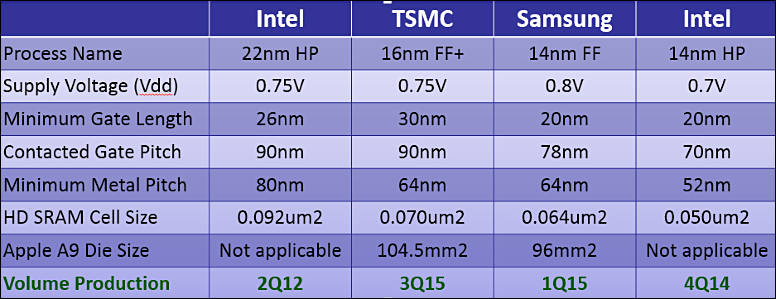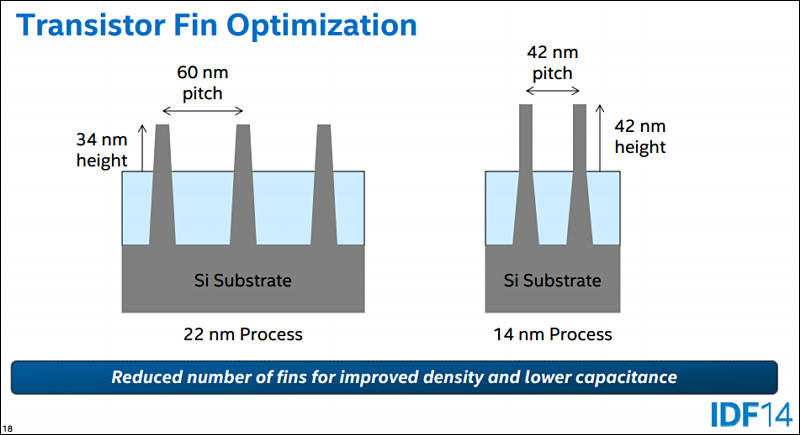
It allows to keep PV going, with more focus towards AI, but keeping be one of the few truly independent places.
-
Skynet will just have to wait.
-
Qualcomm Inc. is in talks to acquire NXP Semiconductors NV, a deal that would likely be valued at over $30 billion and represent the latest merger in a rapidly consolidating semiconductor industry.
Huh.
-
Huge issues with 7nm will follow
The India Lab specifically, in collaboration with MRL-US and Intel product architecture teams worldwide, will spearhead the research and advanced development of Microprocessor Cores in the 2022 and beyond timeframe. By conceiving of and prototyping radical approaches, the Lab will aim to deliver much greater CPU power and area efficiency while still delivering industry-leading performance. The microarchitecture and design of these advanced CPUs will be aggressively co-optimized with Intel's sub-10nm technology nodes deep into the next decade.
It would appear that Intel's new launch time frame for these new processor cores has been pushed out by a couple of years, from 2020 to 2022.
http://www.fool.com/investing/2016/09/02/intel-corporation-may-have-pushed-7-nanometer-tech.aspx
-
And here is another issue
Sales for the month of June 2016 reached US$26.4 billion, an uptick of 1.1% over the May total of US$26.1 billion, but down 5.8% from the June 2015 total of US$28.0 billion, SIA said. Cumulatively, year-to-date sales during the first half of 2016 were 5.8% lower than they were at the same point in 2015.
With exponentially rising costs of development and manufacturing costs it is not good to have any sales drops.
-
It is not about CPU, it is about Intel 14nm process. I suggest to check specialized resources like EE Times


 img975.jpg776 x 299 - 59K
img975.jpg776 x 299 - 59K -
In what regard exactly?
They can no longer scale in frequency so they add cores keeping very big margins.
Most people do not understand that 8x core chip cost to Intel is around 1.5-1.7x compared to more common 4 core chip. So, managers in Intel and press keep people in dark to get big margins and advertisement budgets that come from this same margins.
-
To make thing simple - in early processes all elements scaled proportionally. Already at around 28mm it started to become hard, transistors design changed and only some elements had been scaled while other remained larger. In 14nm it became even worse, 14nm from different manufacturers can differ very much in size. Now 14nm is mostly marketing term.
Howdy, Stranger!
It looks like you're new here. If you want to get involved, click one of these buttons!
Categories
- Topics List23,980
- Blog5,725
- General and News1,352
- Hacks and Patches1,152
- ↳ Top Settings33
- ↳ Beginners255
- ↳ Archives402
- ↳ Hacks News and Development56
- Cameras2,362
- ↳ Panasonic992
- ↳ Canon118
- ↳ Sony156
- ↳ Nikon96
- ↳ Pentax and Samsung70
- ↳ Olympus and Fujifilm100
- ↳ Compacts and Camcorders300
- ↳ Smartphones for video97
- ↳ Pro Video Cameras191
- ↳ BlackMagic and other raw cameras115
- Skill1,960
- ↳ Business and distribution66
- ↳ Preparation, scripts and legal38
- ↳ Art149
- ↳ Import, Convert, Exporting291
- ↳ Editors191
- ↳ Effects and stunts115
- ↳ Color grading197
- ↳ Sound and Music280
- ↳ Lighting96
- ↳ Software and storage tips266
- Gear5,417
- ↳ Filters, Adapters, Matte boxes344
- ↳ Lenses1,580
- ↳ Follow focus and gears93
- ↳ Sound498
- ↳ Lighting gear314
- ↳ Camera movement230
- ↳ Gimbals and copters302
- ↳ Rigs and related stuff273
- ↳ Power solutions83
- ↳ Monitors and viewfinders340
- ↳ Tripods and fluid heads139
- ↳ Storage286
- ↳ Computers and studio gear560
- ↳ VR and 3D248
- Showcase1,859
- Marketplace2,834
- Offtopic1,319






